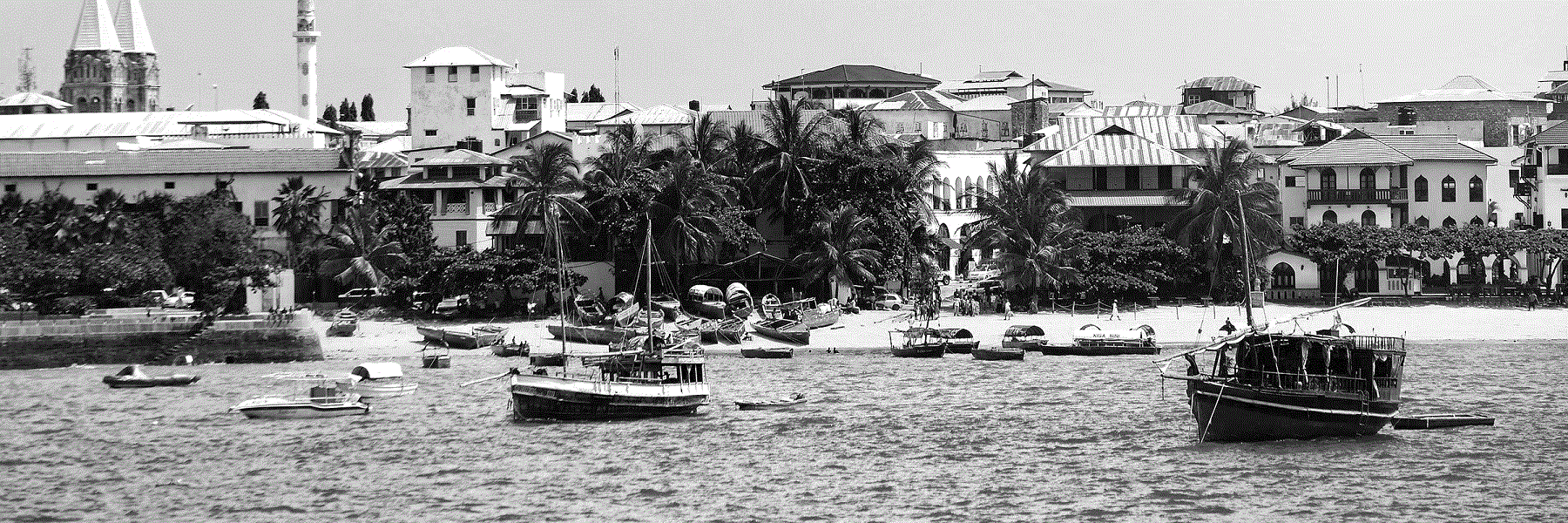

History
Zanzibar
is part of the United Republic of Tanzania, geographically corresponding to the archipelago of the same name, made up of two main islands, Unguja and Pemba, and numerous smaller islands.
Small Settled Islands Surrounding Unguja Island:
Tumbatu Island, Mnemba Island & Uzi Island
Due to the influence of the joint Arab cultures, Persian and Bantu, and the frenetic commercial activity that Zanzibar has linked to the Middle East and even India and China, the archipelago is one of the most representative of the Swahili culture, whose language was long the predominant one in trade between Asia and Africa, and still plays the role of lingua franca in much of East Africa.
The historic center of the capital of Zanzibar, Stone Town, full of architectural and historical heritage of Swahili culture, has been declared a Unesco World Heritage Site. Zanzibar was also a central place of the slave trade in East Africa, and the spice route, and even today a significant part of its economy is based on the production of cloves, nutmeg, cinnamon, pepper and ginger. In recent decades it has experienced a continuous and rapid development of the tourism sector, which exploits the natural heritage, landscape and culture of the island.

History

To revive the fortunes of Zanzibar, giving it a long period of prosperity and wealth, were the Omanis, though, want to change, the key factor in this newfound prosperity was the slave trade. It is estimated that from Zanzibar has passed more than a million slaves from the countries of East Africa.
In 1841 the Omani capital was moved from Muscat to Zanzibar. Omani culture is undoubtedly the one that left the greatest impression, in the uses, customs, religion. Who has had the opportunity to visit Oman can see the strong bond between the two countries continues. The Omanis, aware that the slave trade would not last forever (given also the pressure of the British government for their abolition), introduced in Zanzibar cultivation of cloves, making the island the world's largest producer. The cultivation of cloves are added to other spices, which since then became hallmark of the production island. The abolition of slavery, which officially took place in 1897, and the cultivation of cloves decimated by a violent storm, gave the coup de grace at the end of the domination of Oman.
Travellers, traders, raiders and colonizers from around the world have been drawn to Zanzibar throughout the centuries, Sumerians, Assyrians, Egyptians, Phoenicians, Indians, Chinese, Malays, Persians, Portuguese, Arabs, Dutch and the British have all set foot on the island's beautiful white beaches, each leaving behind a different legacy. The original inhabitants of the island were the Bantu, who probably migrated from the mainland across an ancient land bridge. The first mention of Zanzibar comes from the Greek mariner's guide, Periplus of the Erythraean Sea, which was written around AD 50. Referred to as Menouthais, the island was described as being ‘low and wooded, in where there are rivers and many kinds of bird and the mountain tortoise'.
By AD 700, the first Muslim influence had been established on Zanzibar as Arabs sailing from the Gulf, via the trade winds, began to settle there. By 1107 the first coral stone mosque was built at Kizimkazi in the south west. The Arabs, many from the Oman, intermarried freely with the locals to form the foundations of the Swahili people. The Shirazi, settlers from the Persian Gulf arrived around AD 1200, adding yet another ingredient to the Zanzibar melting pot.

Sultan Jamshid bin Abdullah - Sultan to rule Zanzibar before he was ousted in 1964 in the Zanzibar revolution
His Highness the Sultan of Zanzibar Sir Khalifa bin Harub (left) walks with his excellency the British Rr
The November 1, 1890 Zanzibar was declared a British protectorate. After various vicissitudes in June 1963 the British government gave Zanzibar own government, albeit with limited powers and December 10, 1963 was born the Sultanate of Zanzibar. Meanwhile, a feeling of hostility was raised against the Arab population, which controlled much of the power and wealth. The revolution of 12 January 1964 forced the Arabs and Indians to flee, contributing to the further decline of the island. So Sheikh Karume, who proclaimed himself prime minister, agreed to a pact of union with Tanzania that gave birth to the United Republic of Tanzania.
The rest is history of our days.


Languages spoken in Zanzibar
The language spoken in Zanzibar is the Kiswahili, a language of Bantu origin, with significant Arab influences and actually under many anglicisms. The ruling coincides with the writing, like the Italian, with the emphasis mostly on the last syllable.
Zanzibaris are very important for the greetings. In meetings with local people, you will see how the greetings are a continuing one, not only asks how is the data subject, but also the entire family.
Sheikh Abeid Karume (1905 - 1972), the first President of Zanzibar and Vice President of Tanzania, following its independence, circa 1965
Abeid Amani Karume was the first President of Zanzibar. He obtained this title as a result of a revolution which led to the deposing of His Majesty Sir Jamshid bin Abdullah, the last reigning Sultan of Zanzibar, in January 1964.
Karume was assassinated in April 1972 in Zanzibar Town. Four gunmen shot him dead as he played bao at the headquarters of the Afro-Shirazi Party
